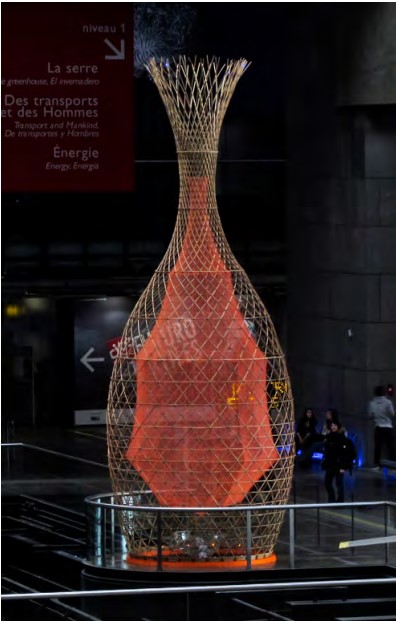Summary
“Recent interest in science art collaborations seems to have focused on how artists can benefit from technological advancements in creating their works and how scientists can use the graphic arts to more effectively display their data. But interactions between science and art can extend beyond these established exchanges through functional art.” (Martin, 2014)
“The physical, chemical, biological, architectural, musical, and artistic worlds are replete with examples incorporating identifiable patterns, rhythms, networks, and fractal-like relationships. In the field of water science, specifically, there is a fertile ground for physical and digital art to serve a functional role in researching, understanding, and providing practical design.” (Martin, 2014)
Example: “Water from Air: As sources of high quality freshwater become increasingly scarce, recovering atmospheric water has captured the attention of engineers and designers alike. Two visionary architects, Arturo Vittori and Andreas Vogler, have created a passive water collector (i.e., no energy required to operate) composed of a nine-meter tall bamboo framework supporting a specialized fabric on which the nighttime fog condenses. Catching and accumulating potable water is a function of Warkawater’s geometry and fabric pattern. It was modeled after a native tree in Africa, serves as an artistic feature and gathering place for the community, and can be assembled by local people using simple tools.” (Martin, 2014)
Analysis
The adjective “passive,” immediately struck me while analyzing the atmospheric water example. The solution’s ability to condense fog without the use of energy illustrates the effectiveness of proper material choices. Similarly, the main contributor to my wearable garment solution may reside in a specialized fabric.
In this analogy the textile choice would be considered a passive application. This contrasts from solutions that include water or sports drinks. In those instances, there is an active independent variable manipulating the body.
Sources
Martin, D. L. (2014, June). functional art and water science . Researchgate.net. Retrieved September 30, 2022, from https://www.researchgate.net/publication/270050466_Functional_Art_and_Water_Science




